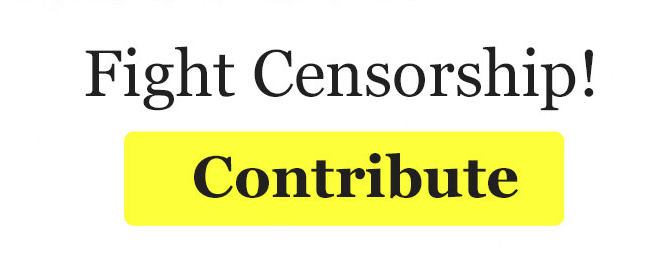
Navigating the waves of maritime safety regulations in the Norwegian Arctic
By: Saskia Trubbach and Gunnar Sander // Norwegian Institute for Water Research, Maaike Knol-Kauffman // UiT The Arctic University of Norway, Jelmer Jeuring and Malte Müller // Norwegian Meteorological Institute
These questions were the topic of a two-day SUDARCO stakeholder workshop, discussing prospective scenarios and regulatory approaches for mitigating risks in the Norwegian Arctic.
Shipping trends: past and future
While the expedition cruise season has expanded, further growth in shoulder seasons may be limited by winter vessel transfers to Antarctica. Despite increased cruise activity in Svalbard waters over the past decade, the course of future developments remains dependent on the continuous evolution of regulatory frameworks. Fishing vessels operate year-round, but uncertainties related to fish stocks, quotas, and the impacts of ocean warming make future projections challenging. In contrast to regions at lower latitudes, high latitudes pose additional operational risks due to harsh and often hazardous weather and sea-ice conditions, darkness, remoteness, and limited communication and search and rescue (SAR) infrastructures.
ADVERTISEMENT

How effective is the Polar Code?
The International Maritime Organization (IMO) adopted the International Code for Ships Operating in Polar Waters (Polar Code) in 2017 to enhance navigational safety in challenging Arctic conditions. The Code outlines functional requirements for vessels regarding environmental and human safety. Through a self-regulatory mechanism, operators are responsible for implementing risk mitigation measures based on operational risk assessments. However, limited experience and understanding of hazards in the Arctic often lead to gaps in the risk assessment, impeding the effective implementation of the Polar Code. Governance actors argued that, while improvements are needed, the overall framework adequately addresses risk mitigation throughout the Arctic.
The Association of Arctic Expedition Cruise Operators (AECO) emphasised the introduction of additional safety protocols for its members, fostering collaboration with SAR units. This regulatory bottom-up approach by the sector itself complements IMO regulations and has the potential to address deficiencies in operational risk assessments.
Fishing vessels are currently excluded from the Polar Code, but larger vessels will gradually face specific requirements outlined in the Code. Uncertainties remain about the practical implications of these new regulations.

National solutions to global gaps
The limitations of the Polar Code raised concerns among workshop participants about the adequacy of existing risk and safety systems. This sparked discussions on the necessity for additional regulations in Norway. Skepticism towards increased national regulation was grounded in the current proliferation of regulations by different sectoral authorities, impacting shipping activity around Svalbard. Cruise industry representatives argued that uncertainty about the implications of new regulations could lead operators to explore alternative destinations. They emphasised the importance of considering the cumulative effects of additional regulations — a view supported by the Cruise Committee (see fact box).
Their report explicitly asserts that dimensioning an emergency response system for an accident with a large cruise vessel is not feasible. The recommended measures are mainly designed to reduce the probability of an accident, accounting for the additional risk of shipping in Arctic waters. Workshop participants were asked to reflect on the advantages, disadvantages, and practical challenges of two of the suggested measures:
- Static regulation: eg, restriction of the onboard capacity to 500-750 persons in Svalbard waters
- Dynamic regulation: traffic regulation in specified periods and areas when adverse weather conditions are present or forecasted
The static approach offers clarity and easy enforceability. With fewer people on board, evacuations are less challenging, and fishing vessels, which are usually closest to a distressed vessel, face reduced pressure with an obligation to assist. Criticisms mainly focus on the arbitrary and simplistic nature of static regulations. Dynamic regulations were commended by some for their ability to adapt to hazards in real time, but concerns were raised about the feasibility of implementation and the challenges associated with forecasting sea and weather conditions in Arctic environments. A shift to dynamic regulation would necessitate enhanced communication infrastructure and warning systems. Nonetheless, handing over operational decision-making from vessel operators to an external authority raises concerns about accountability and could potentially create a misleading sense of safety in open navigation areas.
In SUDARCO, our ongoing interdisciplinary research will assess the practical feasibility of both static and dynamic regulations, considering implications for knowledge requirements, information infrastructure, and resources at local operational and (inter)national policy levels.


Further reading
Cruise Committee (2022) Cruise traffic in Norwegian waters and adjacent sea areas – Maritime safety, emergency preparedness and rescue [Official Norwegian Reports NOU 2022: 1]. Ministry of Justice and Public Security. https://www.regjeringen.no/en/dokumenter/nou-2022-1/id2901535/
Müller M, Knol-Kauffman M, Jeuring J, Palerme C (2023) Arctic shipping trends during hazardous weather and sea-ice conditions and the Polar Code’s effectiveness. npj Ocean Sustainability 2: 12, https://doi.org/10.1038/s44183-023-00021-x
This article was originally published by the Fram Forum
The Barents Observer Newsletter
After confirming you're a real person, you can write your email below and we include you to the subscription list.


